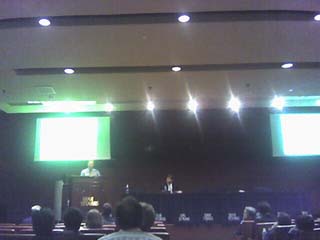retail
industry
 |
At a recent conference (1), Ruby Tuesday's Chairman and CEO, Sandy Beall, discussed his company's WOW-U, a specialized training initiative that the company started in 1998. After his presentation, I asked Sandy whether he felt that RT's turnover had decreased as a result of the program. Before giving me a straight answer, he proceeded to tell me how other firms measure turnover differently by separating senior management from frontline personnel and how his company did it the right way. With trepidation, he hesitated to tell me that he believed it had decreased turnover. Fully aware of turnover in his category - 110% - I asked his, to which he choked and told me that he mentioned it during his presentation and that I wasn't paying attention. Intentionally making me look foolish, he then asked me what I thought the industry average was and I said 82%, to which he immediately corrected my gross incompetence, claiming my numbers were way off. Without skipping a beat, I then asked him to humor me and repeat his turnover, and he reluctantly said it was 112%.
Naturally, at such a relatively low turnover rate of 82%, spending on any training and retention programs delivering 112% turnover would be a huge waste of money, not to mention the implication that he's got a bunch of retards running the program. (The figure I quoted was for the casual and fine dining category, while RT's is considered full service casual dining [for families], and woe betide the fool who mistake the two.) But the real eye-opener here is that they're slightly trailing their peers, as opposed to leading, despite their investment in specialized training. So either way, their program really is run by a bunch of retards; or training has little or nothing to do with retention. (Editorial: Based on our own research [2], - and personal experience - training is a critical component to retention, so by a process of elimination, one can only speculate the former must be the more accurate explanation.)
But Ruby Tuesday's isn't alone against the greatest challenge faced by the restaurant industry - keeping critical frontline labor costs low or variable enough to make a razor-thin profit in the ultra-competitive $450 billion food-service industry. McDonalds has graduated over 65,000 associates from their Hamburger University program in the last four decades; a relatively newer company, Starbucks utilizes a support center; just 3 short years after opening its first store, Wendy's launched a management institute; Applebee's utilizes its support center primarily for its 50 franchisees; and Yum! Brands, Inc., with 33,000 restaurants employing 840,000 employees split into 6 distinct brands (KFC, Pizza Hut, Taco Bell, A&W All-American Food Restaurants and Long John Silvers) has a Yum! University, albeit not as formalized (i.e. campus and dedicated professors) as their peers (3). And like any good management consultant knows, it's cheaper to keep 'em, than replace 'em. So, the real question is whether or not corporate university training programs in the restaurant industry work to maintain turnover at an average 113% or are they a terrible waste or resources, as alternatives exist to redeploy assets away from training and towards other incentives, potentially even lowering the current average?
Without evaluating curricula from different programs, it's problematic to assume whether or not the relevant things are being taught the correct way; whether the instructors are underqualified; and what happens to alumni during the course of their careers. However, by comparing peer turnover and correlating it to the overall performance of the industry, we can surmise that without this specialized training, turnover may be worse than it actually is.
If you're considering launching a corporate university training program, it behooves you to also consider the following:
1) the costs associated with training 100 or 100,000 associates, including speed of training and applicability of training;
2) the optimal front-line structure to screen the most committed associates to undergo training (i.e. to make the company's investment in that associate worthwhile);
3) the effectiveness of outsourcing instructors vs. retaining in-house professors and whether or not a training program can qualify for accreditation, thus benefiting the long-term career of the associate;
4) the value of maintaining a campus vs. on-site instruction;
5) the availability of
tax benefits from implementing this sort of specialized training program.
Write to Al Berrios
at editor@alberrios.com
Top
Footnotes
(1) Bear Stearns Eleventh Annual Retail, Restaurants & Apparel Conference
at their HQ in NYC
(2) Analysis of the Organization
(3) Company websites
Top
Disclaimer:
The recommendations, commentary and opinions published herein are based on
public information sometimes referenced via hyperlinks. Any similarities or
likeness to any ideas or commentary from any other sources not referenced
is purely coincidental. al berrios & co. cannot control any results occurring
from advice obtained from this publication nor any opinion(s) conveyed by
any reader of this publication.
(c) 2005. All Rights Reserved. al berrios & company, inc. Published
by al berrios & co. This Report may not be reproduced or redistributed
in any form without written permission from al berrios & co., subject
to penalty.